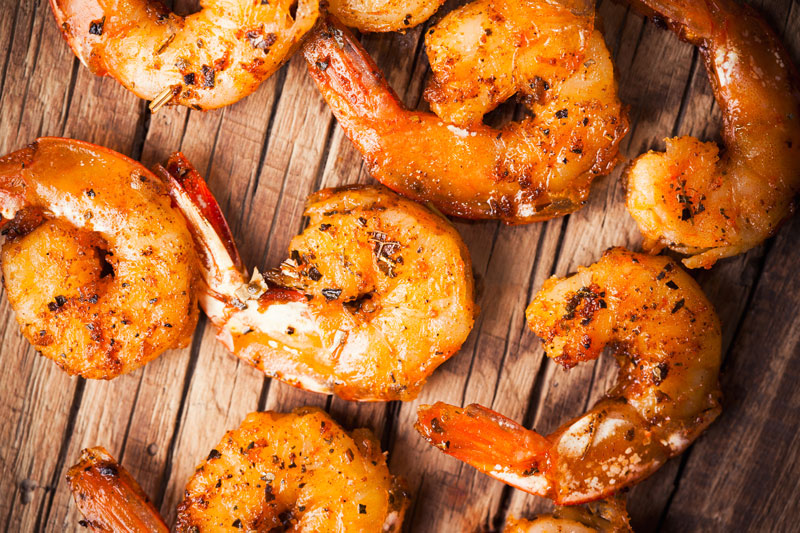We’ve included two tricks to make this the best gambas al ajillo you’ve ever eaten. First, we infuse extra virgin olive oil with slices of garlic, which are later used as a crunchy garnish. Second, we marinate the shrimp with a secret ingredient—baking soda—to make the cooked shrimp extra “poppy.”
Ingredients
- 1/2 cup extra virgin olive oil, divided use
- 10 cloves garlic (5 thinly sliced, 5 minced), divided use
- 1 pound tail-on shrimp, peeled and deveined
- Coarse salt (kosher or sea)
- 1/4 teaspoon baking soda
- 1/4 teaspoon hot red pepper flakes, or more to taste
- 1 1/2 teaspoons Spanish sherry vinegar
- 2 tablespoons chopped fresh flat-leaf parsley
- Crusty bread, for serving
Directions
Step 1
About 8 hours before you intend to cook, pour the olive oil into a small bowl. Add the thinly sliced garlic and let sit at room temperature. After 8 hours, strain the oil into another container, reserving the sliced garlic.
Step 2
Place the shrimp in a medium bowl. Add the minced garlic, 3/4 teaspoon salt, baking soda, hot red pepper flakes, and 3 tablespoons of the garlic-infused oil. Set aside.
Step 3
Heat the remaining infused oil in a large skillet or cazuela over medium-high heat. Add the sliced garlic and cook just until it is a light golden brown, about 1 minute. Fish the garlic out with a slotted spoon and set aside. Add the shrimp mixture and cook, stirring constantly, until the shrimp are barely cooked through, about 2 to 3 minutes, depending on their size. Do not overcook. Stir in the sherry vinegar, parsley, reserved garlic slices, and salt to taste. Serve immediately with crusty bread for sopping up the juices.
Serves 2 as a main course; 4 as a tapa — Recipe adapted from seriouseats.com

